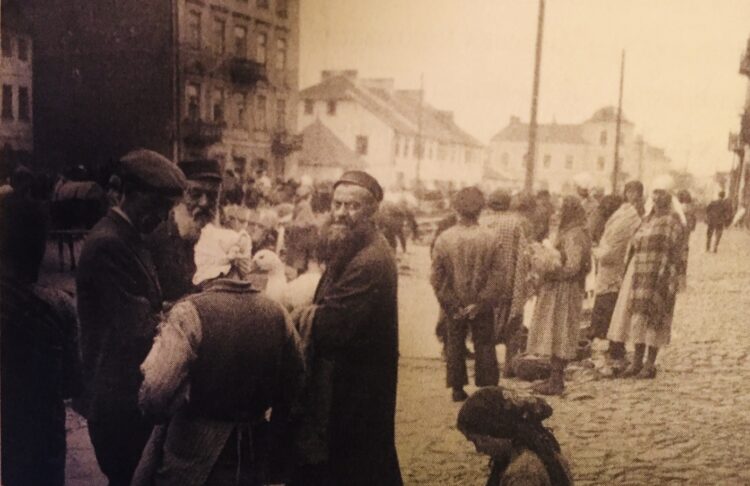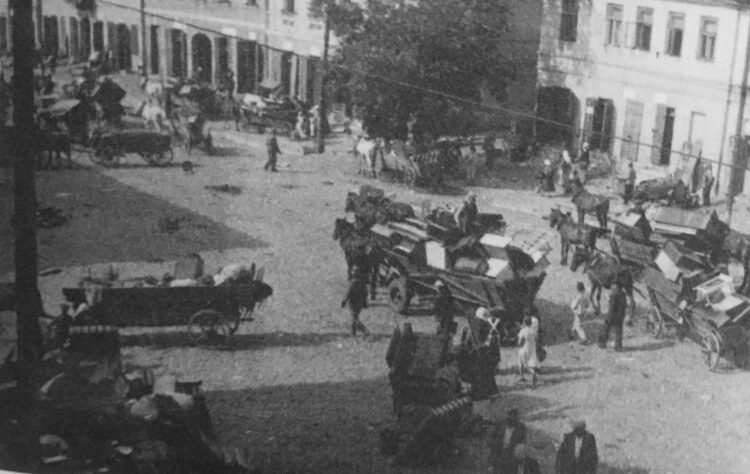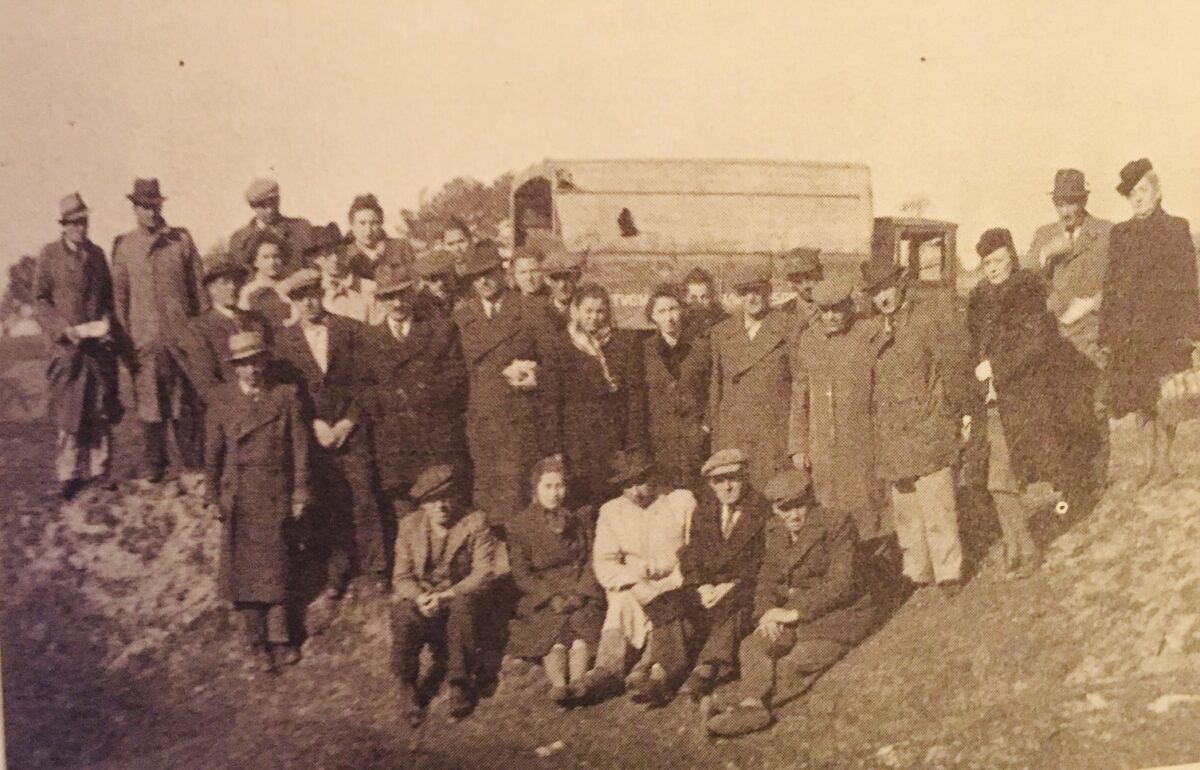Tens of thousands of Polish Holocaust survivors returned or reappeared in Poland after World War II, hoping to resume their lives and reclaim their properties. Some had gone into hiding, others had endured Nazi extermination camps, and still others had fled into the Soviet Union after Germany’s invasion of Poland on September 1, 1939.
The returnees were the lucky ones, given that 90 percent of Polish Jews had perished during the Holocaust. But much to their disappointment and bitterness, they were often met with aversion by Polish Christians. The inhospitable reception they usually received was a phenomenon that occurred throughout Poland.
“A feeling of great estrangement and experience of dislike on the part of non-Jewish inhabitants became for many Holocaust survivors markers of their return to their native city,” writes the Polish historian Lukasz Krzyzanowski in Ghost Citizens: Jewish Return To A Postwar City (Harvard University Press).
Originally published in Polish in 2016, this lucid and scholarly work focuses on Radom, a provincial industrial city 100 kilometres south of Warsaw. Krzyzanowski, an assistant professor at the Polish Academy of Sciences in Warsaw, chose Radom as a case study of a postwar Jewish community for two reasons. He had full access to the archives of the local Jewish Committee, which was established in 1945 to meet the needs of survivors, and he was familiar with Radom, having lived there for the first 17 years of his life. In addition, he read family documents in private collections and interviewed Holocaust survivors.

By all accounts, 959 survivors lived in Radom in the summer of 1945. By the end of 1946, only 111 remained, the rest having moved to larger cities or emigrated from Poland altogether. That number dwindled to 30 in 1950, when a monument dedicated to the victims of Nazi persecution was unveiled in a square where a synagogue had stood until it was torn down in the name of urban renewal.
According to the author, this was a seminal event. As he puts it, “It was the last time the Jewish dwellers of Radom appeared together in public and acted as a community. Hence, the monument, which still marks the space, is a reminder of both the prewar community … and the short-lived community of survivors who briefly came together in the early postwar period.”
As Krzyzanowski frankly acknowledges, the topic he examines is fraught with emotion: “Poland still has a very complicated relationship with its past, and in particular with the Holocaust and the involvement of Poles in dispossessing and killing their Jewish compatriots.”

Radom, one of the largest cities in Kielce province, had a population of 78,000 in 1931, one-third of its residents being Jewish.While the majority were traditional and spoke Yiddish, a small minority were assimilated into Polish culture. A significant proportion of Jews earned a livelihood in handicrafts and trade. A disproportionate percentage of the city’s doctors and dentists were Jewish.
As he points out, deep divisions between Jews and Christians arose during the interwar period. “Economic crisis, mutual prejudice, and the growth of nationalist and antisemitic moods among the Christian population influenced the situation. Right-wing circles spread anti-Jewish propaganda within Radom, where both local and nationally distributed antisemitic press was available.”

Physical attacks on Jews were not uncommon, and Christians were incited to boycott Jewish-owned shops. The German occupation of Radom, which started on September 8, 1939, exacerbated Jewish-Christian relations. “A true abyss formed between … the Polish Christian and Jewish populations of Radom,” he says.
The Nazi persecution of Jews began almost immediately after German troops captured Radom. Jews were gradually deprived of their personal property and transferred into two districts which formed the ghetto.

The mass murder of Jews, overseen by SS officer Wilhelm Joseph Blum, got under way in August 1942. The deportation of Jews to the Treblinka death camp was carried out by German forces, the Polish Blue Police, Ukrainians and Jewish police. The last Jewish inhabitants were transported to Auschwitz-Birkenau in August 1944. “The annihilation of the Radom Jews … played out before the eyes of their non-Jewish neighbors,” he says.
Fewer Jews survived on Aryan papers in Radom than in bigger cities like Warsaw or Krakow because it was more difficult to hide for a long time. Polish assistance to Jews was a “relatively rare phenomenon” in Radom, but 30 Poles would be recognized by Yad Vashem, the Holocaust memorial in Jerusalem, as Righteous Gentiles.

By his estimate, 300,000 Polish Jews fled to the Soviet Union after the Wehrmacht conquered Poland. After the war, 100,000 were repatriated to Poland. Approximately 40,000 to 50,000 Jews survived within the borders of Poland, though the real figure may be as high as 120,000.
The Jewish population in postwar Poland reached 244,000 in 1946, just before the pogrom in Kielce. Jewish self-help committees were created to assist the survivors, since Jews could not count on non-Jewish sources. In Radom, the Jewish Committee was successively run by Mojzesz Bojm and Leon Stellman, neither of whom had not been part of the Jewish community’s prewar intelligentsia.
“Jews who took up residence in Radom immediately after liberation met daily with antipathy from non-Jewish inhabitants,” he says. Consequently, Jews perceived Radom as “extremely hostile and dangerous.”
Antisemitic flyers appeared, four Jewish returnees were murdered, and thieves preyed on Jews. As Krzyzanowski says, “Holocaust survivors were an easy mark for attackers driven by a desire for profit. Jews were without a doubt the most defenceless and most vulnerable inhabitants.”
The lukewarm to hostile attitude of the Roman Catholic Church toward Jews contributed to this poisonous atmosphere, he notes.
For most Poles in Radom, Jews were fundamentally invisible in the social landscape. “They were ghost citizens — physically present, but socially nonexistent.”
Attempts by Jews to recover their properties, which wound up in the hands of Poles during and after the war, only made things worse. Indeed, much of the anti-Jewish violence of the postwar era was linked to this problem.
“The majority of Jews who came back to Radom did not find their pre-war homes, apartment houses, stores, workshops and factories waiting for their return. They had abandoned them either at the beginning of the war by fleeing east to the Soviet Union, or in the spring of 1941, when they moved into the ghetto by order of the occupation authorities.”
Jews trying to reclaim their properties were stymied by a 1946 nationalization law or by fierce resistance from Poles who had acquired them. As a result, many returnees failed to regain their real estate holdings.
In closing, Krzyzanowski writes, “The survivors of the Holocaust who found themselves in Radom immediately after the war were castaways on a familiar-looking island that soon turned out to be completely alien and hostile … They came back from the abyss, and no one was expecting their return.
“Broad strata of non-Jewish Poles quickly and willingly accepted the fate the Germans inflicted on Jewish fellow citizens. Many Polish Christians looked upon the successive stages of the extermination of the Jews with unconcealed satisfaction.”
In short, he adds, Jews returning to Radom experienced what he bluntly describes as “an environment full of indifference, dislike, enmity, and outright violence.”
No wonder nearly all the survivors left Poland soon after the war.
